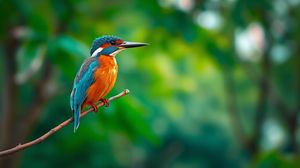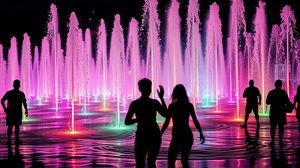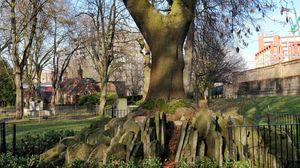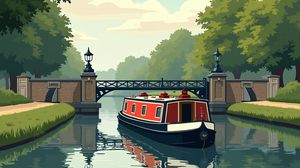
Camley Street Natural Park is a unique urban nature reserve nestled in the heart of King's Cross, providing a tranquil oasis amidst the hustle and bustle of London. This small but perfectly formed 2-acre park showcases the richness of British wildlife and serves as a green lung in the city for both locals and visitors. Originally a coal drop site, it was converted into a nature reserve in 1984 and is managed by the London Wildlife Trust.
Despite its relatively small size, Camley Street Natural Park is home to a surprising variety of habitats, including ponds, marshlands, and wildflower meadows. These diverse ecosystems make it a vital haven for birds, butterflies, bats, and an array of plant species. The park is a crucial stopover for migrating birds, offering a rare glimpse of natural wildlife in the city.
One of the particularly interesting features of the park is its location alongside the Regent's Canal. It's not uncommon to spot the curious sight of moorhens and other waterfowl exploring this narrow waterway, creating a captivating blend of urban life and nature. Visitors often enjoy a leisurely stroll alongside the canal, allowing them to be immersed in this harmonious blend.
What makes Camley Street Natural Park stand out is its community focus and dedication to environmental education. It regularly hosts workshops, guided nature walks, and school trips, helping people of all ages connect with nature in an approachable and engaging way. This is part of their ethos to promote environmental awareness and engage city dwellers in wildlife conservation.
In recent years, the park underwent significant redevelopment, which included the introduction of a new visitor and learning centre. This eco-friendly building was designed with sustainability in mind, featuring solar panels and water-saving facilities, aligning with the park's mission to encourage green living practices and sustainability.
For a park located in one of London's most dynamic areas, the Camley Street Natural Park remains a peaceful getaway that surprisingly ties the urban environment to the natural world. It's a testament to the city's dedication to preserving green spaces amidst urban development, offering visitors a unique and refreshing experience.

Making the Most of Your Visit:
When visiting Camley Street Natural Park, take some time to explore the different habitats. The park may be small, but it's packed with a variety of ecosystems. Spend a quiet moment at the pond – it's a prime spot for birdwatching. You might even catch a glimpse of some unusual species!
Try visiting during the different seasons. The wildflower meadows are stunning in spring and early summer, offering a gorgeous backdrop for a walk. In autumn, the changing leaves provide a completely different kind of beauty. You'll also find that the types of wildlife vary with the seasons.
The park's location next to Regent's Canal is a real treat. After exploring the park, consider taking a leisurely walk along the canal. Look out for the moorhens and other waterbirds that frequent this area. It's a lovely way to extend your nature walk and soak up the peaceful atmosphere.
If you're interested in eco-friendly architecture, check out the new visitor centre. Its sustainable design with solar panels and water-saving features is a great example of green building. Plus, it's a great place to learn more about the park's conservation efforts and maybe participate in an event or workshop.
For those with a camera, Camley Street is a great place for photography, especially if you enjoy capturing urban wildlife. The contrast between nature and the backdrop of King's Cross's modern architecture makes for some unique shots.

Visiting Times & Costs:
Camley Street Natural Park is open to the public and offers free entry to all visitors.
The park is typically open from dawn to dusk throughout the year, making it accessible for a wide range of visiting hours. However, it's a good idea to check for any seasonal adjustments or special events that might affect these hours.
While entrance to the park is free, some workshops or special events may have a fee, so it's advisable to inquire beforehand if you're interested in those activities.
Regarding accessibility, the park is committed to being inclusive, but given its natural terrain, some areas may be challenging for wheelchair users or those with limited mobility. Recent redevelopments have improved access, including pathways and facilities, but visitors should be prepared for potentially uneven ground in certain areas.

Address & Map:

Nearby:























